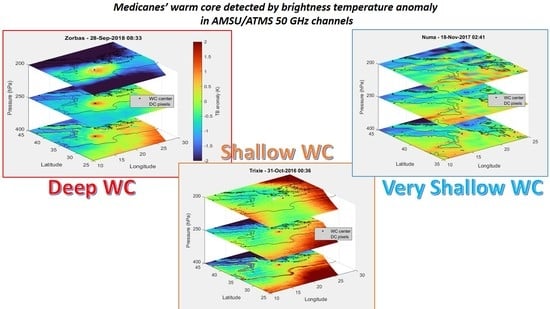Warm Core and Deep Convection in Medicanes: A Passive Microwave-Based Investigation
Abstract
Share and Cite
Panegrossi, G.; D’Adderio, L.P.; Dafis, S.; Rysman, J.-F.; Casella, D.; Dietrich, S.; Sanò, P. Warm Core and Deep Convection in Medicanes: A Passive Microwave-Based Investigation. Remote Sens. 2023, 15, 2838. https://doi.org/10.3390/rs15112838
Panegrossi G, D’Adderio LP, Dafis S, Rysman J-F, Casella D, Dietrich S, Sanò P. Warm Core and Deep Convection in Medicanes: A Passive Microwave-Based Investigation. Remote Sensing. 2023; 15(11):2838. https://doi.org/10.3390/rs15112838
Chicago/Turabian StylePanegrossi, Giulia, Leo Pio D’Adderio, Stavros Dafis, Jean-François Rysman, Daniele Casella, Stefano Dietrich, and Paolo Sanò. 2023. "Warm Core and Deep Convection in Medicanes: A Passive Microwave-Based Investigation" Remote Sensing 15, no. 11: 2838. https://doi.org/10.3390/rs15112838
APA StylePanegrossi, G., D’Adderio, L. P., Dafis, S., Rysman, J.-F., Casella, D., Dietrich, S., & Sanò, P. (2023). Warm Core and Deep Convection in Medicanes: A Passive Microwave-Based Investigation. Remote Sensing, 15(11), 2838. https://doi.org/10.3390/rs15112838








